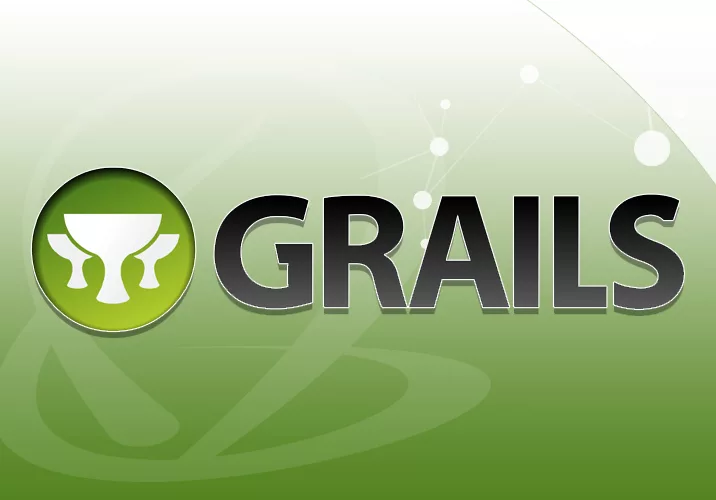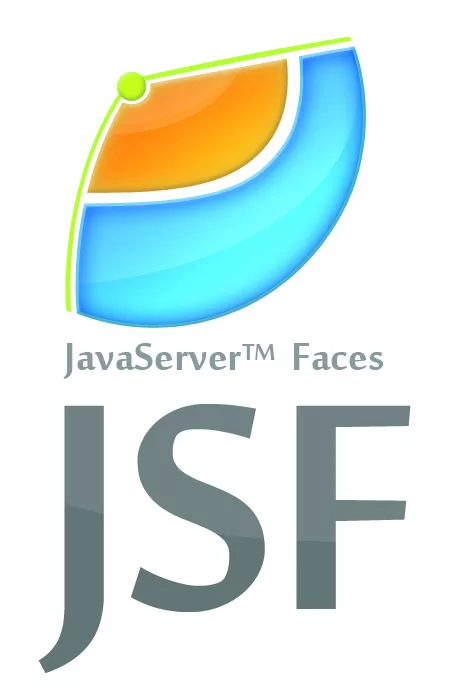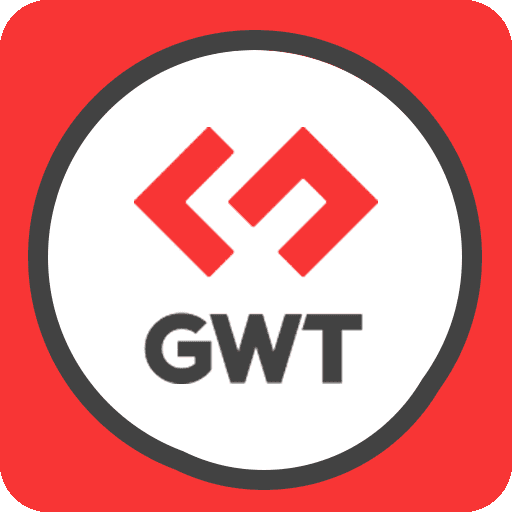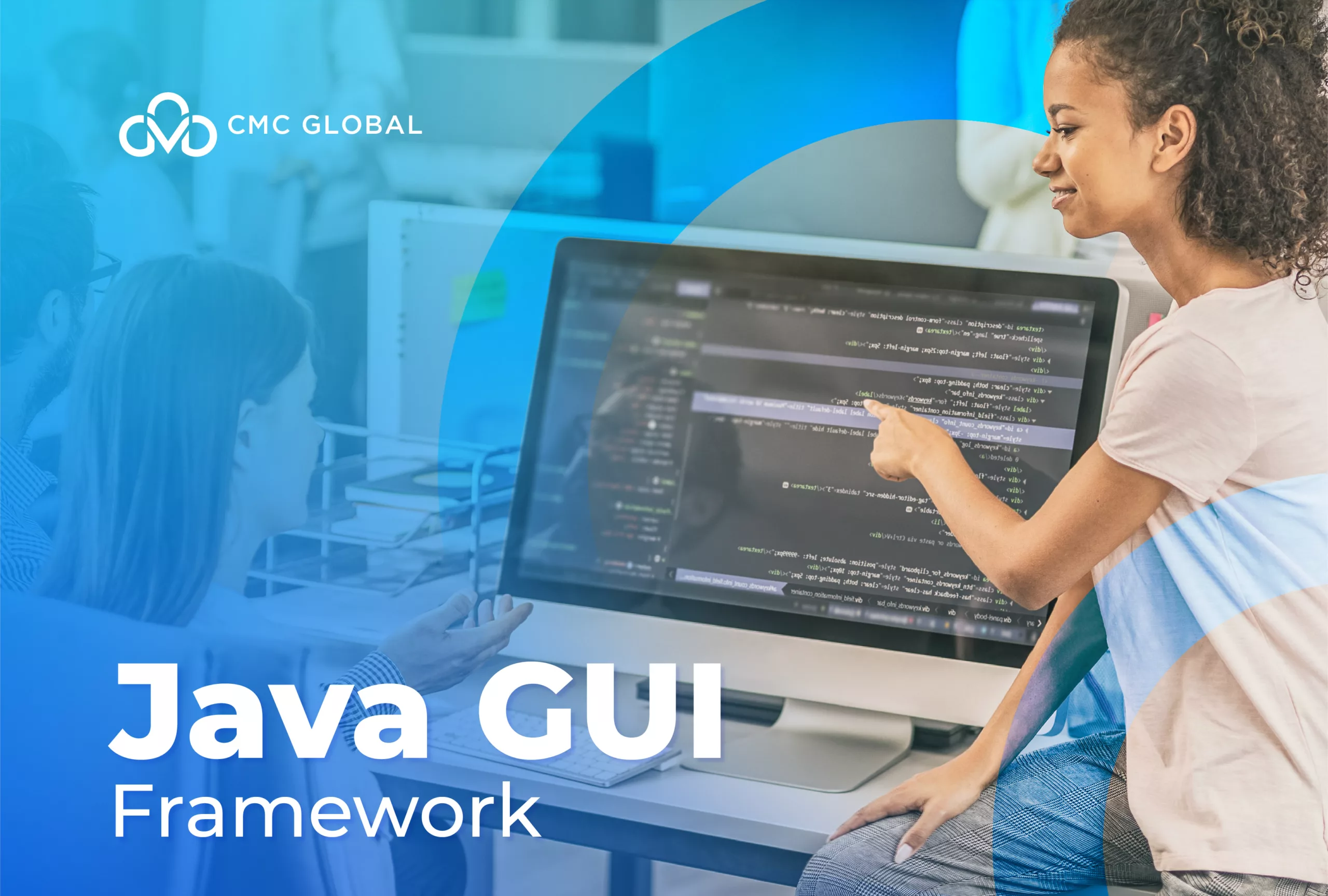Designing stunning user interfaces for your Java applications has never been simpler thanks to these highly rated Java GUI frameworks. Explore the best choices available and elevate your UI design to new heights.
What is a GUI framework?
In simple terms, a framework includes libraries containing graphical control elements essential for building application GUIs (graphic user interfaces). In essence, when your objective is to create a GUI application, a GUI framework includes a number of widgets and various UI components that significantly streamline the app development process. Your developers won’t have to recreate the basic elements like menus, buttons, control elements, or windows from scratch.
Things to Consider Before Selecting a Java GUI Framework

When deciding on a Java GUI framework for developing feature-rich components, each company will have unique factors to take into account. At the outset of the product development phase, it’s essential to deliberate on the following aspects, which may vary depending on your industry:
- Final Product:
Determine the type of application you intend to build, such as an Android app, a desktop application, a web application, an IoT application, or a hybrid application designed for cross-platform use. It’s crucial to prioritize this consideration as different application types have distinct requirements.
- API Integration:
Evaluate whether your application needs to interact with one or more APIs. Ensure that the selected framework is compatible with the required APIs and that any additional API-related demands can be incorporated into the application.
- Operating System Compatibility:
Identify the operating systems your development team will use and confirm that the considered frameworks are accessible on these platforms.
- Open-Source Requirements:
Assess whether your project necessitates the use of open-source frameworks. If your Java applications will be distributed with a proprietary license, verify the legal compatibility of using open-source frameworks in conjunction with your closed-source code.
- REST Integration:
Determine if your application will rely on RESTful APIs for making HTTP requests to access and manage data. In this case, choose a framework that seamlessly supports RESTful API integration.
Now that you are familiar with what Java GUI frameworks entail and the factors to deliberate upon when making your selection, let’s explore some of the top frameworks available for constructing Java GUI applications and creating sophisticated user interfaces.
Read more: Top 10 Java Outsourcing Companies In The World
The Top 6 Java Frameworks for GUI and UI
These Java frameworks listed below can assist your development teams in creating GUI components and applications rapidly and reliably. By minimizing the need for writing extensive boilerplate code and reducing the number of functions to be created, the end product benefits from pre-vetted and thoroughly tested code, thus demanding less debugging effort.
-
Spring
Spring stands out as one of the most widely used in the Java development landscape. It offers a range of modules and libraries that greatly simplify project development, featuring advanced validation and authentication capabilities for added security.

Spring’s origins trace back to 2002, and it was initially made available under the Apache 2.0 license in June 2003. The framework was designed with a focus on speed and developer productivity, making it equally applicable to smaller projects. Notable Spring modules encompass:
- Spring Core Container: Supplies spring containers (BeanFactory and ApplicationContext).
- Aspect-oriented programming: Facilitates the implementation of cross-cutting concerns.
- Authentication and authorization: Offers configurable security mechanisms.
- Convention over configuration: Delivers a solution for rapid application development.
- Data access: Enables interaction with relational databases.
- Inversion of control container: Manages the configuration of application components and the lifecycle of Java objects.
- Messaging: Allows declarative registration of message listener objects.
- Model–view–controller: Provides extensions and customization hooks for web applications and RESTful web services.
- Remote access framework: Supports declarative remote procedure calls of Java objects across networks.
- Transaction management: Unifies various transaction management APIs and coordinates transactions for Java objects.
- Remote management: Facilitates declarative exposure and management of Java objects for local or remote configuration.
- Testing: Offers classes for writing unit and integration tests.
Key Features / Product Highlights
- Lightweight
- Swift development and delivery
- Flexible connection
- Synergizes effectively with Machine Learning and Artificial Intelligence
- Robust capabilities for split testing
-
Grails
Grails stands as an open-source framework, operating under the Apache 2.0 license, and it is underpinned by Groovy. It leverages the Java Virtual Machine for the creation of web applications. What sets Grails apart is its foundation on Spring Boot, granting developers access to an extensive array of features. Additionally, Grails offers an excellent choice for constructing RESTful web applications, thanks to its highly efficient API calls.

Initially conceived by Graeme Rocher in October 2005, Grails was designed with the aim of optimizing productivity by concealing intricate configuration details from developers, following the “coding by convention” principle. In its early stages, it was known as “Groovy on Rails,” but this name was dropped in March 2006 following a request from the founder of Ruby on Rails.
Key Features / Product Highlights
- An excellent choice for developers who favor Groovy over Java
- Incorporates straightforward object mapping
- Facilitates code reuse across Grails applications through user-friendly plug-ins
- Offers comprehensive documentation for the Persistent framework
- Utilizes Groovy Server Pages (GSP) for templates
- Employs dynamic tag libraries to create web components
- Boasts customizable and extensible Ajax support
- Seamlessly integrates with Java, ensuring a smooth collaboration between the two technologies.
-
Jakarta Faces
Jakarta Faces, previously recognized as JavaServer Faces or JSF, is a specialized framework tailored to streamline the development of contemporary user interfaces. JSF encompasses a wide array of user interface components that can be flexibly employed, offering the ability to connect them with client events and data. The primary role of JSF lies in the creation of front-end applications that seamlessly interact with backend services.

Originally crafted by Eclipse and introduced in 2001, JSF, coded in Java, presents the Moonwalk API. This application framework is designed for the creation of web-based user interfaces. Notably, Facelets became the official view technology for JSF in the 2.0 release, successfully resolving life-cycle conflicts that previously necessitated intricate and unreliable workarounds.
Key Features / Product Highlights
- Comprehensive libraries of UI components
- Minimal coding requirements
- Implementation of ManagedExecutorService for the creation of thread pools in the Jakarta EE environment, facilitating more manageable thread spawning
- Adherence to the Model-View-Controller (MVC) architectural pattern
- Efficient state management
- Robust event handling capabilities
- Built-in input validation functionality
- Streamlined page navigation mechanisms
- Support for internationalization and accessibility features.
-
Google Web Toolkit
Google Web Toolkit (GWT) is a highly favored framework among developers engaged in the construction of intricate web applications. GWT serves as a bridge, converting Java into functional JavaScript, thereby relieving developers from the obligation to master both Java and JavaScript simultaneously. Furthermore, as it enjoys support from Google, its longevity is assured.

Introduced in 2006, GWT was originally centered around the concept of reusability in web development tasks. It tackled various functions like asynchronous remote procedure calls, history management, bookmarking, UI abstraction, internationalization, and cross-browser compatibility.
Key Features / Product Highlights
- Open-source nature
- Offers a unified code base applicable to both client and server components
- Demands only proficiency in Java programming
- Effortlessly integrates with a variety of other Java tools
- Effectively manages browser history
- Presents dynamic, reusable UI components
- Abounds with libraries aimed at streamlining the development process.
-
Play
Play is an open-source Java framework meticulously designed for web application development. Under the Apache 2.0 license, this framework offers a user-friendly experience, making it comparably simpler to navigate than Spring, necessitating only a web browser and a text editor to kickstart your work.
Play comes equipped with a wide array of plugins and demonstrates its prowess in integrating seamlessly with NoSQL databases. Consequently, it emerges as an exceptional choice for mobile app development. However, its versatility doesn’t stop at Android or iOS applications. Play proves itself valuable for a broad spectrum of Java GUI applications, including those requiring scalability.
Introduced in 2007 by Lightbend and Zengularity, Play adheres to the Model-View-Controller (MVC) architectural paradigm. Programmed in Scala, this framework exhibits compatibility with a multitude of programming languages.
Key Features / Product Highlights
- Enhances developer efficiency through a convention-driven approach over extensive configuration settings
- Implements hot code reloading, facilitating real-time development modifications
- Streamlines debugging with in-browser error displays
- Eliminates the need for complex configurations, reducing setup complexity
- Adopts RESTful architecture for efficient web service design
- Offers compatibility with various Integrated Development Environments (IDEs).
-
Hibernate
Hibernate, a prominent Java framework, serves the needs of numerous large corporations, offering capabilities for data validation and user access. It stands as one of the most widely embraced open-source Java frameworks available.

Hibernate is equipped with an array of advanced security functionalities that ensure data management in a secure environment. Designed to function seamlessly with relational databases, Hibernate effectively mitigates various vulnerabilities linked to data misuse.
Originating from Red Hat, Hibernate made its debut on May 23, 2001. It serves as a framework for establishing a mapping between an object-oriented domain model and a relational database. Licensed under the GNU Lesser General Public License 2.1, Hibernate excels in mapping Java classes to database tables.
Key Features / Product Highlights
- Portability ensures flexibility across diverse platforms
- Fosters enhanced productivity by reducing redundancy and complexity
- Facilitates the ongoing maintenance of projects
- Minimizes code duplication
- Lightweight and delivers remarkable performance speed
- Allows for database-independent queries
- Automates the creation of database tables
- Streamlines the process of performing database joins
- Provides comprehensive support for query statistics and monitoring of database status.
CMC Global – Your Trusted IT Outsourcing Partner
Here at CMC Global, we recognize the significance of staying up-to-date with the latest industry trends, implementing best practices, and fostering a culture of continual learning. This dedication has enabled us to deliver robust, inventive, and efficient software solutions to our clients.
Whether you’re interested in developing a new software product, enhancing an existing one, or exploring offshore development opportunities, we’re at your service.
Our team of professionals is eager to discuss your project objectives and explore how we can assist you in constructing outstanding software solutions that distinguish themselves in the market.
Don’t hesitate to get in touch – let’s start the journey of creating exceptional software together.




